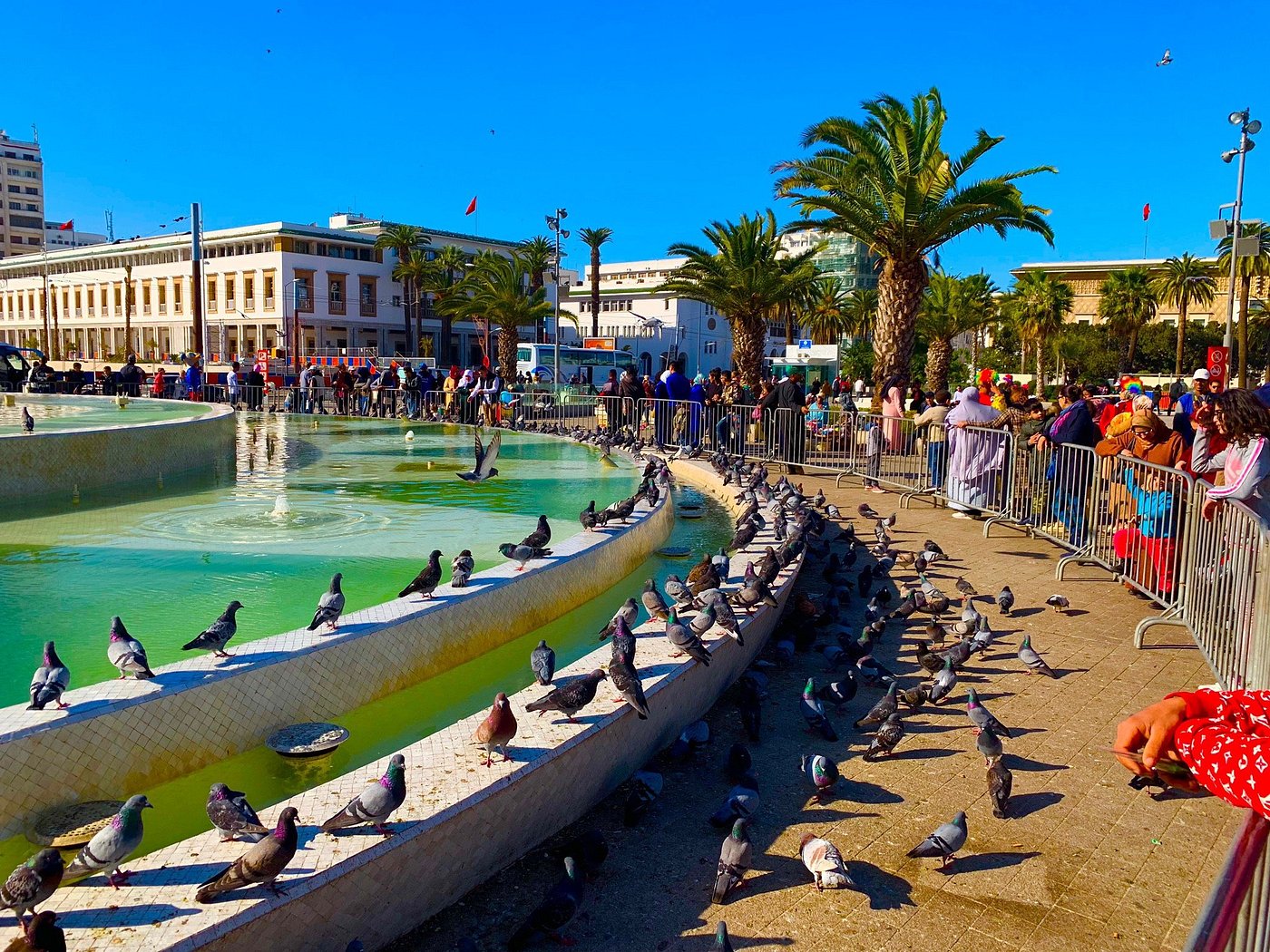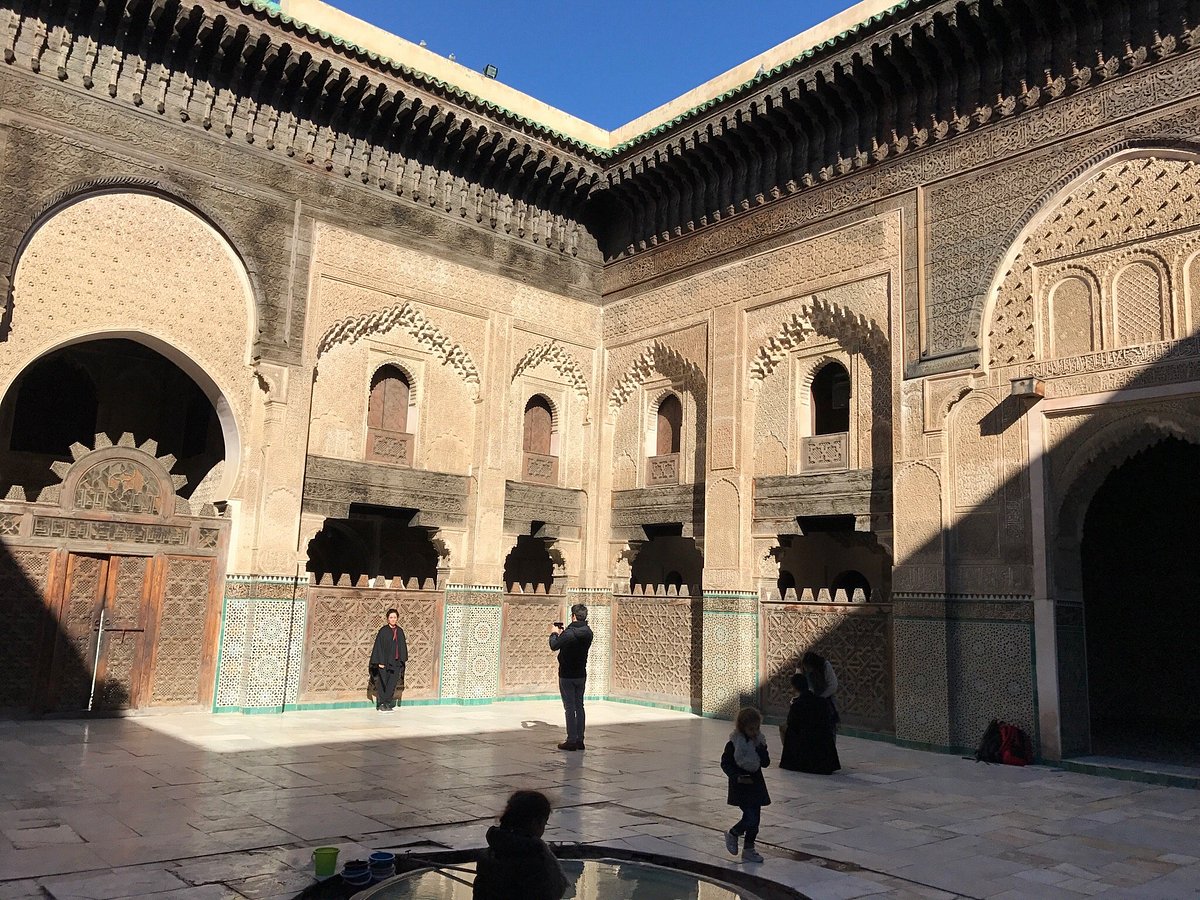
Things to do in Meknes: Hidden Gems of Morocco's Imperial City
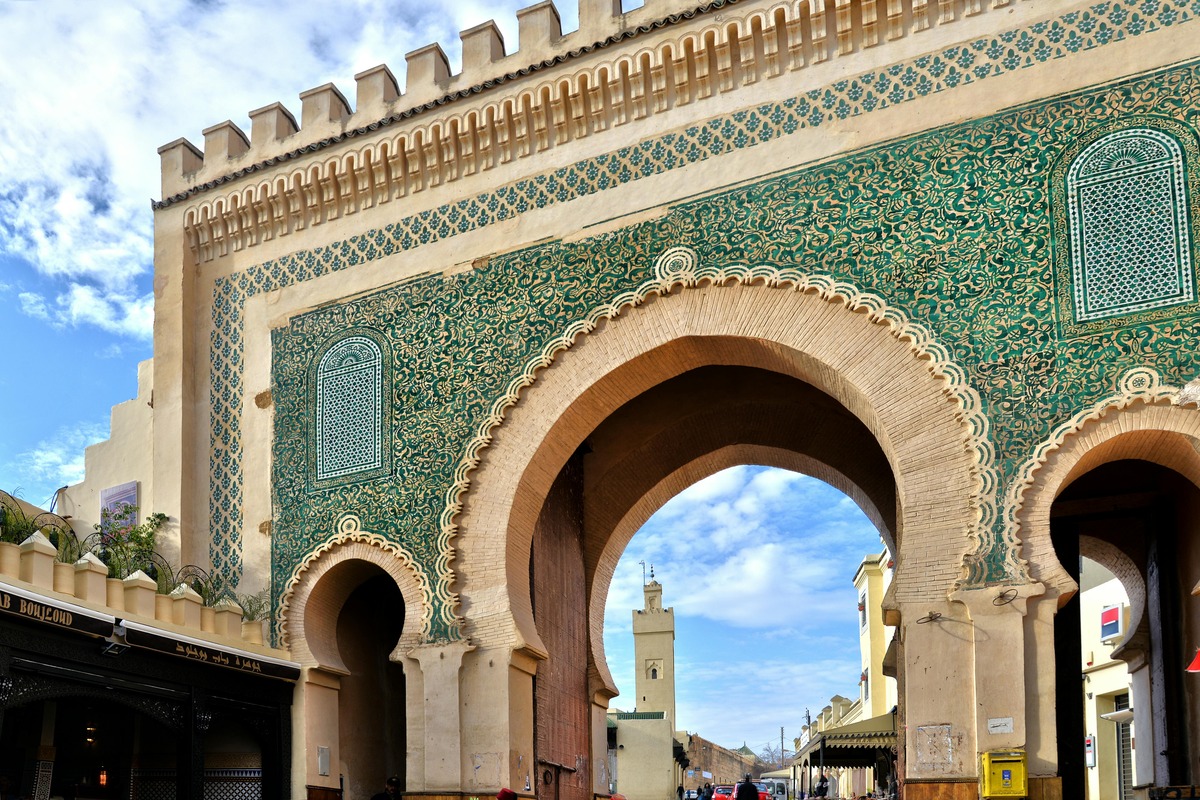
Nestled between the more famous Moroccan destinations of Fes and Marrakech lies Meknes, one of Morocco's four imperial cities that often flies under the radar of many travelers. Yet this historic gem offers a treasure trove of architectural wonders, cultural experiences, and authentic Moroccan charm without the overwhelming crowds. If you're seeking a more intimate experience of Morocco's rich heritage, discovering things to do in Meknes should be high on your travel itinerary.
Visit the Bab Mansour Gate
Bab Mansour Gate – A Masterpiece of Moroccan Architecture
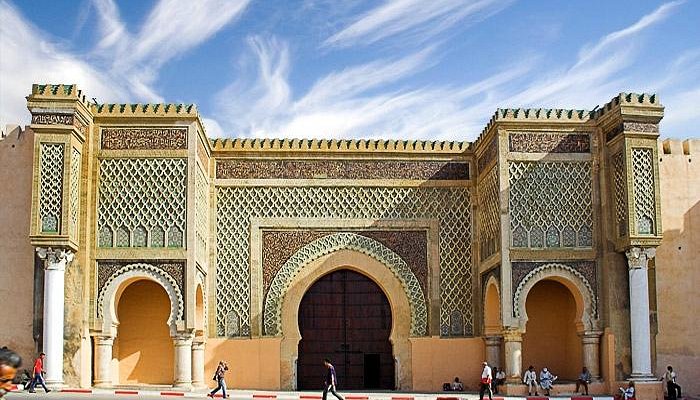
Photo credit: Henrique de Jesus
The magnificent Bab Mansour Gate stands as one of North Africa's most impressive monuments and is often considered the grandest of all imperial Moroccan gateways. Commissioned by Sultan Moulay Ismail and completed in 1732, this monumental entrance to the imperial city features intricate zellij tilework, imposing marble columns (repurposed from the nearby Roman ruins of Volubilis), and Quranic inscriptions that showcase the pinnacle of Moroccan craftsmanship.
The gate's architect, Mansour Laalej (a converted Christian, for whom the gate is named), created a structure so magnificent that when asked if he could build something even more beautiful, he reportedly answered that it would be impossible – a response that allegedly cost him his life at the sultan's command.
Today, visitors can't pass through the gate itself (a smaller side entrance is used instead), but the exterior view from El Hedim Square offers perfect photo opportunities of this architectural marvel. The gate now houses a small art gallery that's worth exploring if you're interested in local artistic expressions.
Explore the Meknes Medina
Exploring the Medina of Meknes
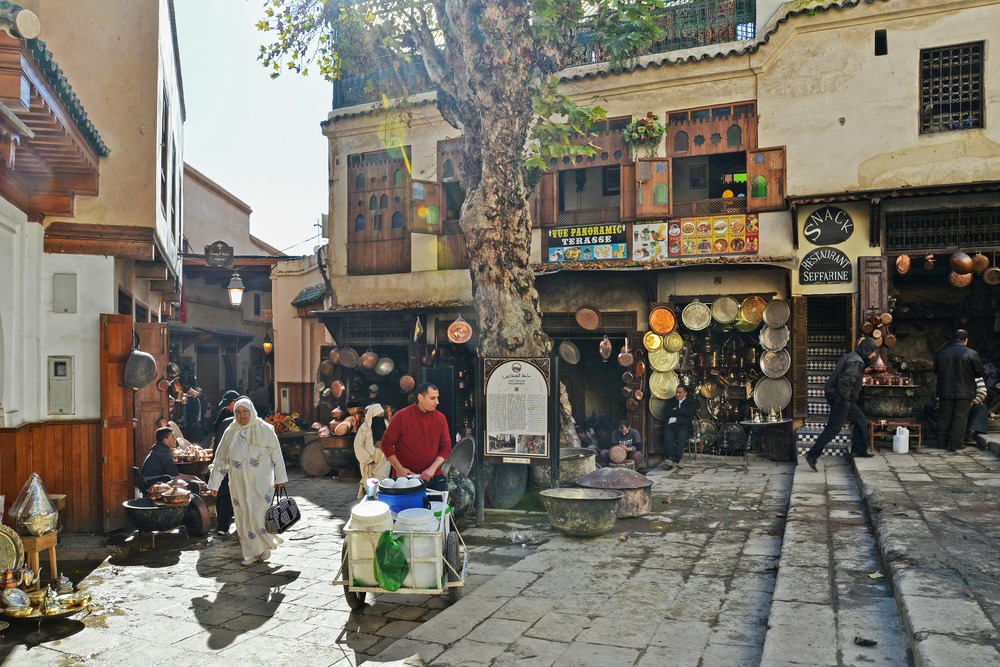
The UNESCO World Heritage-listed medina of Meknes offers a more relaxed alternative to the often frenetic medinas of Fes or Marrakech. Its labyrinthine streets reveal centuries of history at every turn, with architectural influences spanning from the 10th to the 19th century.
Unlike its more famous counterparts, the Meknes medina allows visitors to wander without constant attention from guides or vendors, making it ideal for authentic exploration. The main commercial streets are lined with workshops where artisans practice traditional crafts, from metalwork to woodcarving, often using techniques passed down through generations.
Don't miss the historic madrasas (Islamic schools), hammams (traditional bathhouses), and fondouks (traditional merchant houses) that dot the old city. The covered market near Place el-Hedim offers everything from spices and olives to handcrafted leather goods and traditional Moroccan slippers called babouches.
Discover the Mausoleum of Moulay Ismail
Moulay Ismail's Legacy at the Mausoleum
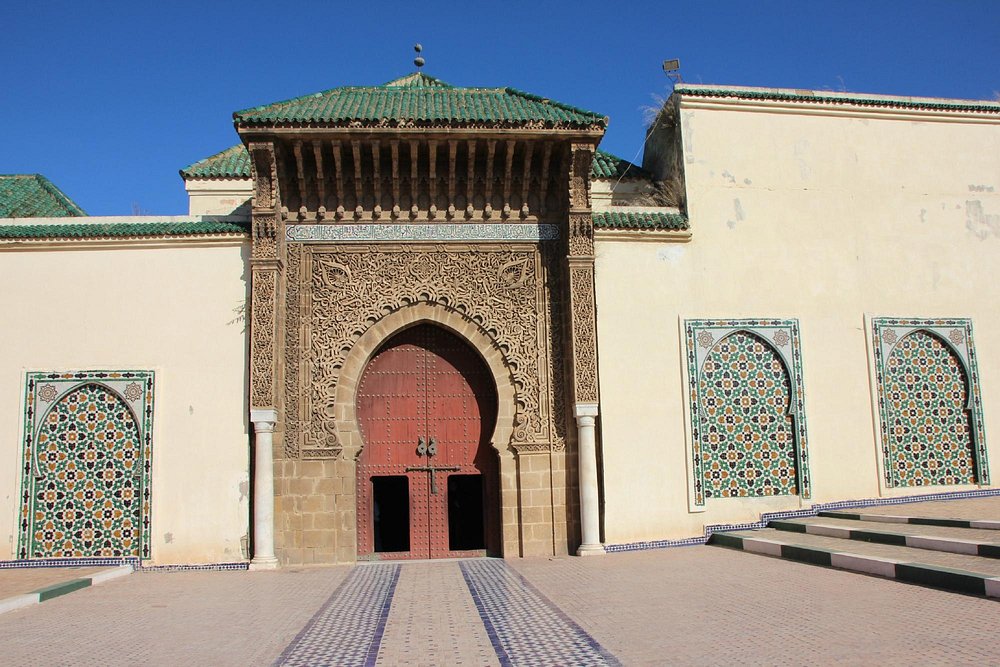
Photo credit: Peter G
The Mausoleum of Moulay Ismail stands as one of Morocco's most important religious and historical sites, housing the tomb of the sultan who transformed Meknes into an imperial capital in the 17th century. Unlike many religious sites in Morocco, this mausoleum welcomes non-Muslim visitors into certain areas, offering a rare glimpse into Islamic funerary architecture.
The complex features stunning courtyards with intricate fountains, meticulously carved cedar ceilings, and walls adorned with elaborate geometric patterns and calligraphy. The tomb chamber itself, though visible only from the entrance for non-Muslims, impresses with its ornate decoration and peaceful atmosphere.
Visitors should dress modestly out of respect and speak quietly within the complex. The experience provides valuable insight into Sultan Moulay Ismail's continuing importance in Moroccan history and the reverence still shown to this powerful historical figure who ruled for 55 years and dramatically expanded Morocco's territory.
Wander Around the Royal Stables of Meknes
The Historic Royal Stables
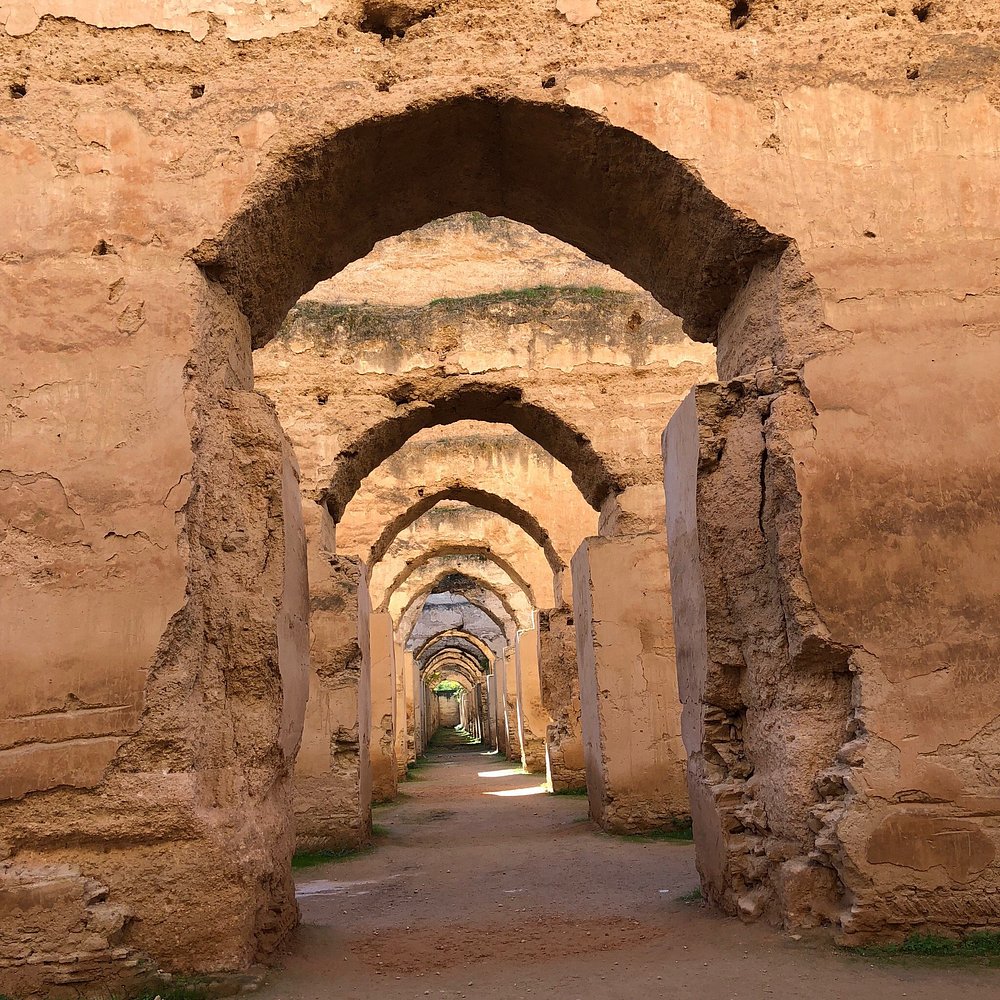
Photo credit: Nancy W
Perhaps one of the most impressive remnants of Moulay Ismail's grand vision for Meknes are the vast Royal Stables, known locally as Heri Souani. Built to house the sultan's 12,000 horses, these enormous structures demonstrate the importance of horses in Moroccan military and royal culture.
The ingenious design included individual stone archways for each horse, sophisticated ventilation systems, and even an elaborate grain storage facility connected to the stables. A complex water delivery system brought fresh water to each horse's stall.
Today, visitors can wander through the partially restored ruins, which still convey the immense scale of the original structures. The massive granaries that adjoined the stables feature thick walls and innovative cooling systems that maintained ideal temperatures for food preservation – a remarkable feat of engineering for the 17th century.
The site is particularly atmospheric in the late afternoon when sunlight streams through the arched windows, creating dramatic lighting across the ancient stonework.
Relax in the Jardin Lahboul
Enjoying the Serenity of Jardin Lahboul

When you need a respite from historical sightseeing, the tranquil Jardin Lahboul offers a peaceful green space on the edge of the city. This well-maintained park features manicured gardens, shady walking paths, and refreshing fountains that provide a cool retreat during warmer months.
Local families frequently gather here, especially during evenings and weekends, making it an excellent spot for observing everyday Moroccan life. Children play on playground equipment while adults socialize over mint tea at the garden café.
The park also houses a small amusement area with rides for children and occasional cultural events during summer months. For travelers seeking a moment of tranquility or a pleasant picnic spot, Jardin Lahboul offers a charming alternative to the more bustling tourist attractions.
Visit the Heri es-Souani
Touring the Heri es-Souani Storage Complex
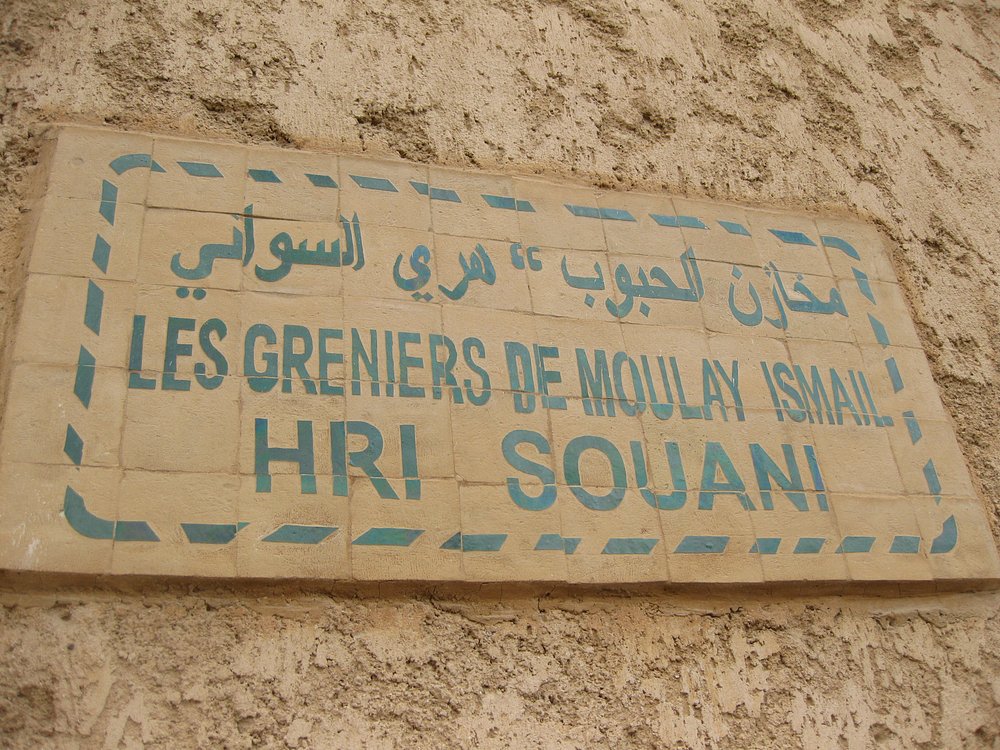
Photo credit: Twin Tourists
Connected to the Royal Stables, the enormous granaries of Heri es-Souani demonstrate Sultan Moulay Ismail's foresight in creating food security for his empire. These massive structures were designed to store grain for up to 20 years, providing supplies for both the royal household and the sultan's 150,000-strong army.
The architectural ingenuity of the granaries is remarkable – thick walls, limited windows, and underground water channels created a natural air conditioning system that maintained consistent temperatures long before modern refrigeration existed. The structures also featured specialized ventilation systems to prevent grain spoilage.
While earthquakes have damaged portions of the original buildings, enough remains to appreciate the impressive scale and sophisticated engineering. The site's atmospheric qualities make it particularly popular with photographers, especially as sunlight filters through the partially collapsed roofs, creating dramatic light patterns across the stone floors.
Explore the Dar Jamai Museum
Moroccan Arts and Crafts at Dar Jamai Museum

Photo credit: Di & Scott
Housed in an opulent 19th-century palace, the Dar Jamai Museum offers visitors a glimpse into the lavish lifestyle of Moroccan nobility while showcasing the country's rich artistic heritage. Built in 1882 as the residence of the powerful Jamai family, the building itself exemplifies traditional Moroccan architecture with its central courtyard, ornate plasterwork, and exquisite zellige tilework.
The museum's collections include fine examples of Moroccan carpets, traditional clothing, jewelry, pottery, and woodwork from different regions of Morocco. The exhibits are particularly strong in showcasing the distinctive Meknes style of embroidery and textile arts.
Don't miss the museum's tranquil Andalusian garden with its central fountain and perfectly symmetrical layout – an ideal spot for photographs or a moment of reflection.
Discover the Meknes El Hedim Square
Discovering the Vibrancy of El Hedim Square

Photo credit: Carla M
The bustling heart of Meknes, El Hedim Square serves as the vital connection between the medina and the imperial city. This vast plaza was created by Sultan Moulay Ismail to provide an impressive approach to his palace complex and the monumental Bab Mansour Gate.
During the day, the square hosts vendors selling everything from fresh orange juice to traditional snacks and handicrafts. As evening approaches, the atmosphere transforms as food stalls appear, storytellers gather crowds, and musicians perform traditional Moroccan songs.
Unlike the more famous Jemaa el-Fnaa in Marrakech, El Hedim Square offers a more authentic and less tourist-oriented experience. Here, you can observe local life unfolding naturally, with families strolling, friends meeting, and merchants conducting their daily business without the constant focus on tourists.
The cafés surrounding the square provide perfect vantage points for people-watching while enjoying mint tea or a casual meal. For photography enthusiasts, the square offers excellent opportunities to capture candid moments of Moroccan daily life with the dramatic backdrop of Bab Mansour.
Experience the Meknes Souks
Shopping in the Authentic Meknes Souks
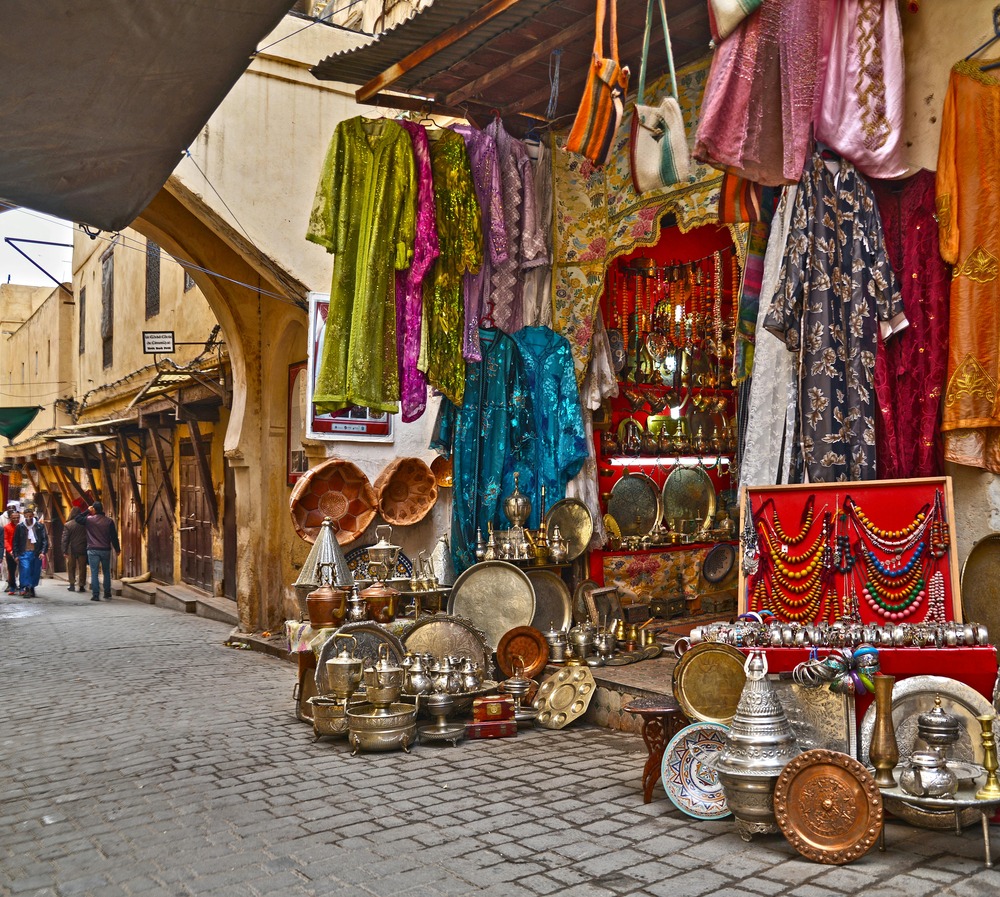
The souks of Meknes offer a more relaxed shopping experience than those in larger Moroccan cities, allowing visitors to browse at leisure without the high-pressure tactics sometimes encountered elsewhere. The main souk areas spread out from El Hedim Square into the medina, each section traditionally dedicated to specific goods.
In the spice souk, pyramids of colorful powders fill the air with exotic scents, while nearby, the textile markets display vibrant fabrics including the distinctive Meknes embroidery. The metalworkers' souk rings with the sound of artisans hammering brass and copper into intricate lamps, trays, and decorative items.
What makes shopping in Meknes particularly appealing is the opportunity to purchase directly from the artisans themselves, often watching them at work in small workshops that have operated for generations. Popular purchases include leather goods, traditional Moroccan ceramics, handwoven textiles, and wooden items decorated with intricate inlay work.
Bargaining is expected but conducted with less intensity than in more touristic centers, creating a more pleasant shopping atmosphere. Remember that showing appreciation for craftsmanship before negotiating price is both culturally appropriate and likely to result in better deals.
Take a Day Trip to Volubilis
Day Trip to Volubilis – Ancient Roman Ruins

Just 30 kilometers from Meknes lies one of Morocco's most impressive archaeological sites – the ancient Roman city of Volubilis. This UNESCO World Heritage site offers exceptionally well-preserved ruins dating back to the 3rd century BCE, providing a fascinating glimpse into Morocco's Roman past.
The site's highlights include remarkably intact mosaics still in their original locations, a triumphal arch, the basilica, and a Temple of Jupiter. The detailed floor mosaics, depicting mythological scenes and daily life, have survived centuries of exposure with their vibrant details still visible.
The location itself adds to the experience, with the ruins set against a backdrop of rolling Moroccan countryside and distant mountains. Morning visits offer the best light for photography and cooler temperatures for exploring the extensive grounds.
Many tours combine Volubilis with the nearby holy city of Moulay Idriss Zerhoun, a picturesque white town cascading down a hillside that holds special significance in Moroccan Islamic history as the burial place of the country's first Islamic ruler.
Photography and Scenic Views in Meknes

For photography enthusiasts, Meknes offers countless opportunities to capture stunning images of historical architecture, daily life, and cultural moments. The golden hour just before sunset bathes the city's sandstone walls in warm light, creating perfect conditions for architectural photography at sites like Bab Mansour and the royal granaries.
The elevated position of Borj Belkari, a former fortress now serving as a military museum, provides panoramic views across the medina rooftops to the surrounding countryside. For street photography, the medina's narrow alleyways offer intimate glimpses of traditional crafts and everyday activities.
The contrast between ancient and modern life creates compelling visual narratives throughout the city, whether capturing children playing against the backdrop of centuries-old walls or artisans practicing traditional crafts using methods unchanged for generations.
Conclusion
From the awe-inspiring Bab Mansour Gate to the atmospheric ruins of the royal stables, the things to do in Meknes offer travelers an authentic glimpse into Morocco's imperial past without the overwhelming tourist crowds found elsewhere. This often-overlooked imperial city rewards those who take the time to explore its historic sites, wander its relaxed medina, and experience its genuine cultural offerings.
Whether you're marveling at the engineering feats of Sultan Moulay Ismail, shopping for traditional crafts directly from artisans, or simply enjoying the rhythm of daily life in El Hedim Square, Meknes provides a more intimate perspective on Morocco's rich heritage. Consider spending at least two full days exploring the city itself, with an additional day for visiting the nearby ruins of Volubilis, to fully appreciate all the fascinating things to do in Meknes.

Lynne
Hi, I’m Lynne, a passionate travel writer and local expert at thingstodo.ma. With years of experience exploring Morocco, I love sharing insider tips and guides to help you discover the country’s hidden gems. Whether it's the lively streets of Marrakech or the peaceful shores of Essaouira, I’m here to make sure you experience the very best of what Morocco has to offer. Join me on this journey, and let's explore together!
Related content
Interdum et malesuada fames



